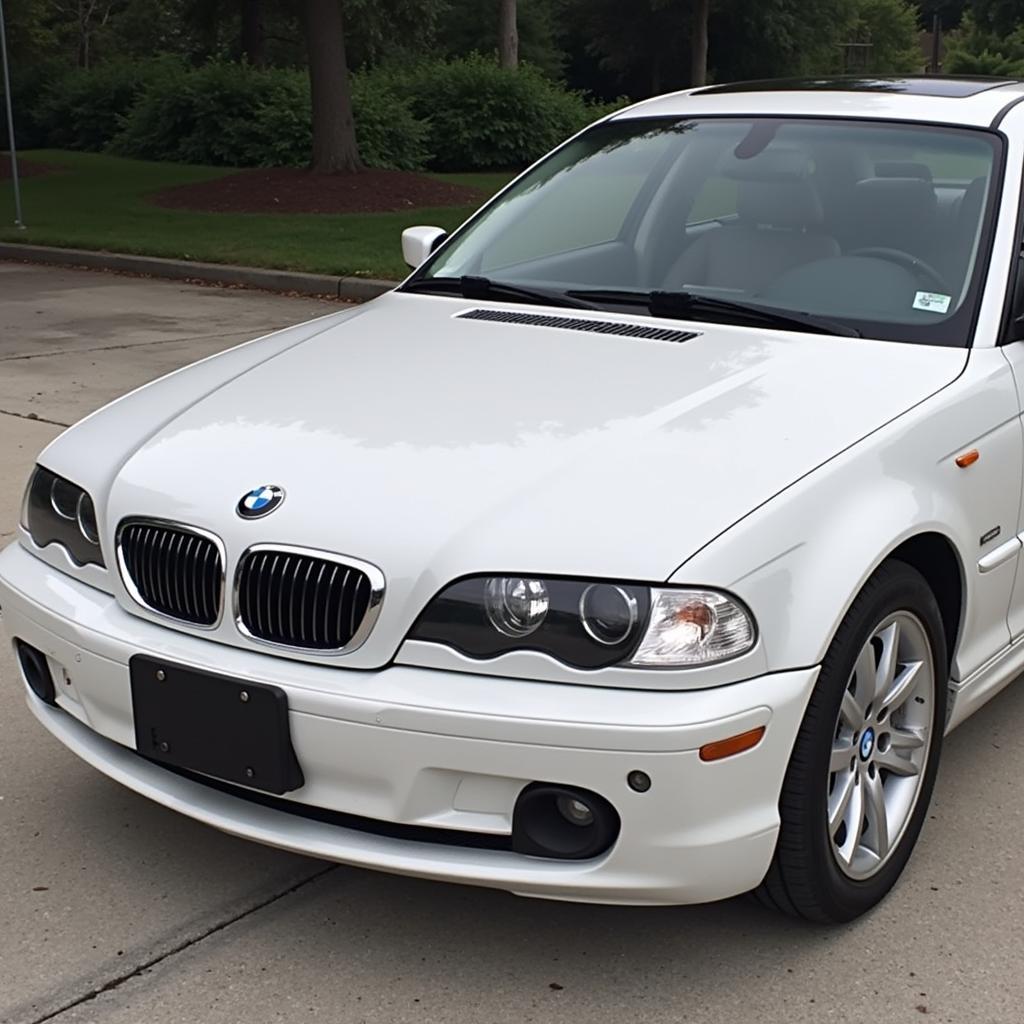Owning a BMW 3 Series is a statement. It speaks of your appreciation for performance, luxury, and cutting-edge technology. However, even the most prestigious vehicles can have their quirks, especially when it comes to integrating older models with modern audio devices. If your 3 Series lacks built-in navigation but you’re yearning for a seamless way to connect your smartphone or MP3 player, you’ve come to the right place. This guide dives deep into the world of auxiliary audio input for the BMW 3 Series, providing clear solutions and expert advice to get your music playing.
Understanding Your BMW 3 Series Audio System
Before we jump into solutions, it’s helpful to grasp the basics of your 3 Series audio setup. Without the factory-installed navigation system, your vehicle likely relies on a simpler head unit, often referred to as a “Business” radio. These units, while reliable, may not have a readily accessible auxiliary port, making direct connections with external audio devices tricky.
Common Issues With BMW 3 Series Audio (No Navigation)
Here’s a breakdown of common challenges faced by 3 Series owners without navigation:
- Missing Auxiliary Port: The most obvious hurdle – no dedicated 3.5mm jack for plugging in your device.
- Software Limitations: Even if a port exists, the head unit’s software might not recognize or support external audio input.
- Compatibility Problems: Older BMW models might have proprietary connections that aren’t compatible with standard audio cables.
Why You Might Not Have an Auxiliary Input
Several factors could explain the absence of an auxiliary input:
- Model Year: Earlier 3 Series generations often lacked this feature as standard.
- Regional Specifications: Certain markets may have received different standard equipment.
- Optional Extras: The original purchaser might not have opted for the auxiliary input package.
Identifying Your Options: Hardware or Software?
Determining the best course of action requires a bit of investigation.
1. Visual Inspection: Carefully examine your center console and glove box for a labeled auxiliary input jack (usually a 3.5mm port).
2. Software Check: Consult your vehicle’s owner’s manual or contact a BMW dealership to confirm if your head unit supports auxiliary input through a software update.
Solutions for Adding Auxiliary Input to Your BMW 3 Series
Let’s explore the most effective solutions for enabling auxiliary audio input:
1. BMW OEM Retrofit Kits
-
How It Works: These kits, available from BMW dealerships or reputable online retailers, provide genuine BMW parts specifically designed for your 3 Series model. They usually involve replacing a section of your center console or adding a dedicated module to your audio system.
-
Pros: Factory-integrated look and feel, reliable performance, warranty coverage.
-
Cons: Can be expensive, may require professional installation.
2. Third-Party Auxiliary Input Adapters
-
How It Works: These adapters tap into the back of your head unit, often utilizing the CD changer or satellite radio connections, to create a new auxiliary input.
-
Pros: More affordable than OEM kits, often easier to install.
-
Cons: Audio quality can vary depending on the adapter’s quality, may void certain aspects of your vehicle’s warranty.
3. Bluetooth Music Adapters
-
How It Works: These wireless adapters connect to your head unit’s CD changer or satellite radio input and pair with your smartphone via Bluetooth, enabling wireless audio streaming.
-
Pros: Wireless convenience, relatively easy installation, often a more affordable alternative to full head unit replacements.
-
Cons: Sound quality might not match a wired connection, potential for minor audio lag depending on the adapter.
4. Aftermarket Head Unit Replacement
-
How It Works: This involves replacing your entire BMW’s head unit with a modern aftermarket unit that offers Bluetooth, auxiliary input, and potentially even Apple CarPlay or Android Auto compatibility.
-
Pros: Access to the latest audio features, improved sound quality (depending on the chosen head unit), enhanced functionality.
-
Cons: Most expensive option, can impact the vehicle’s resale value if not done professionally, may require additional wiring harnesses and adapters.
Troubleshooting Common Auxiliary Input Issues
Encountering problems? Try these troubleshooting tips:
- Check Connections: Ensure all cables are securely plugged into both your device and the auxiliary input.
- Input Selection: Make sure your head unit is set to the correct input source (“AUX” or “Auxiliary”).
- Device Compatibility: Try a different audio device to rule out any compatibility issues.
- Software Updates: Consult your owner’s manual or contact BMW for information on available software updates for your head unit.
FAQs about BMW 3 Series Auxiliary Input (No Navigation)
Q: Can I add navigation to my BMW 3 Series without it?
A: Yes, aftermarket navigation systems can be installed. However, integrating them fully with your vehicle’s existing controls might be complex.
Q: How do I know if my BMW 3 Series has an auxiliary input?
A: Look for a 3.5mm jack labeled “AUX” in your center console, glove box, or armrest. You can also check your owner’s manual or contact a BMW dealer to confirm.
Q: What if I can’t find a suitable auxiliary input solution for my specific model?
A: Consult with a specialized car audio installer or a BMW dealership for personalized advice and potential solutions tailored to your vehicle.
Need Expert Assistance? Contact Cardiagtech!
Navigating the world of automotive electronics and software can be daunting. If you’re unsure about any aspect of adding auxiliary input to your BMW 3 Series, don’t hesitate to reach out to the experts at Cardiagtech. Our team specializes in remote diagnostics, programming, and software solutions for all your automotive needs.
Contact us today at:
- Phone: +1 (641) 206-8880
- Email: CARDIAGTECH[email protected]
- Address: 276 Reock St, City of Orange, NJ 07050, United States
We’re here to help you enjoy your favorite tunes in your BMW 3 Series without limits!

